-
 Bitcoin
Bitcoin $107,275.1551
-0.32% -
 Ethereum
Ethereum $2,485.3056
1.77% -
 Tether USDt
Tether USDt $1.0005
0.03% -
 XRP
XRP $2.2223
1.31% -
 BNB
BNB $657.7608
1.39% -
 Solana
Solana $156.3566
3.02% -
 USDC
USDC $0.9999
0.01% -
 TRON
TRON $0.2791
1.09% -
 Dogecoin
Dogecoin $0.1651
0.45% -
 Cardano
Cardano $0.5738
2.78% -
 Hyperliquid
Hyperliquid $40.2672
5.82% -
 Bitcoin Cash
Bitcoin Cash $517.5487
5.30% -
 Sui
Sui $2.7981
-0.40% -
 Chainlink
Chainlink $13.3500
-0.36% -
 UNUS SED LEO
UNUS SED LEO $9.1220
1.12% -
 Avalanche
Avalanche $17.9515
-0.32% -
 Stellar
Stellar $0.2361
-0.44% -
 Toncoin
Toncoin $2.9423
2.33% -
 Shiba Inu
Shiba Inu $0.0...01145
-0.68% -
 Litecoin
Litecoin $86.1693
-0.63% -
 Hedera
Hedera $0.1493
0.64% -
 Monero
Monero $315.1374
1.81% -
 Polkadot
Polkadot $3.4002
-0.73% -
 Dai
Dai $1.0001
0.03% -
 Bitget Token
Bitget Token $4.5413
-1.35% -
 Ethena USDe
Ethena USDe $1.0002
-0.01% -
 Uniswap
Uniswap $7.1733
-0.57% -
 Aave
Aave $274.0465
-0.23% -
 Pepe
Pepe $0.0...09810
2.24% -
 Pi
Pi $0.5101
-3.10%
Should you leave the market when the volume is stagnant and the MACD diverges?
Stagnant volume and MACD divergence in crypto trading often signal weakening momentum, suggesting traders should reassess positions and watch for potential trend reversals.
Jun 30, 2025 at 09:36 pm
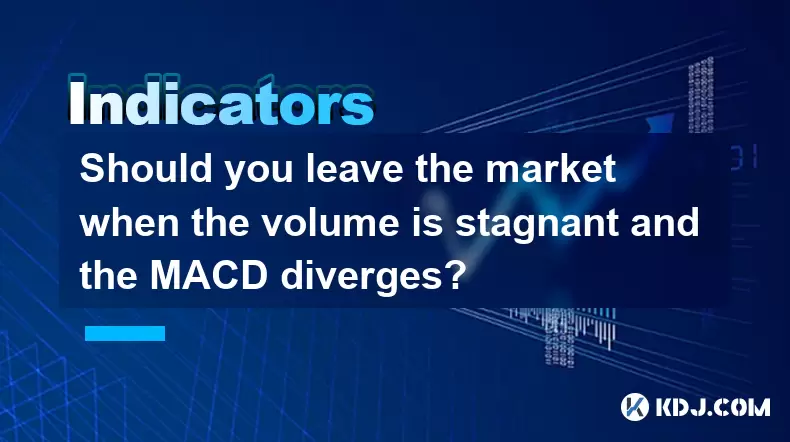
Understanding Volume Stagnation in Cryptocurrency Trading
In the realm of cryptocurrency trading, volume plays a crucial role in determining the strength of price movements. When volume remains stagnant over an extended period, it suggests that neither buyers nor sellers are showing strong conviction. This often leads to sideways movement or consolidation in price. In such scenarios, traders may question whether it's prudent to remain in the market.
Stagnant volume typically indicates low market interest, which can be caused by various factors including lack of news, market fatigue, or uncertainty about upcoming events. While this doesn't necessarily mean a bearish trend is imminent, it does signal a potential weakening in momentum. Traders should pay attention to how price behaves during these periods—whether it holds support levels or breaks through key zones.
The Role of MACD Divergence in Technical Analysis
The Moving Average Convergence Divergence (MACD) is a widely used technical indicator among crypto traders. It helps identify changes in momentum and potential reversals. A divergence occurs when the price makes a new high or low, but the MACD does not confirm this move.
When MACD divergence appears alongside stagnant volume, it raises a red flag for many traders. For instance, if Bitcoin reaches a new peak while the MACD line fails to surpass its previous high, this could indicate weakening bullish momentum. Such signals are especially significant in volatile markets like cryptocurrency, where sudden reversals are common.
It’s essential to understand that MACD divergence alone isn’t a definitive sell signal. It must be interpreted within the broader context of price action and other indicators.
Interpreting Combined Signals: Volume + MACD Divergence
Combining volume stagnation with MACD divergence can create a compelling case for caution. If both signals appear simultaneously, they might suggest that the current trend is losing steam. For example, during an uptrend in Ethereum, if volume starts to dwindle and the MACD forms lower highs despite rising prices, it could imply that fewer participants are willing to push the price higher.
Traders who rely on technical analysis often treat this combination as a warning sign. However, exiting the market entirely based on these two signals alone may not always be necessary. Instead, it could be a moment to reassess position sizes, tighten stop-losses, or look for additional confirmation from other tools like RSI or Bollinger Bands.
Practical Steps to Evaluate Whether to Exit
If you're facing this situation in your own trades, here are some actionable steps to consider:
- Review recent candlestick patterns: Are there signs of rejection at resistance levels? Look for wicks or engulfing candles that may hint at reversal.
- Check historical behavior: Has the asset historically reversed after similar volume and MACD conditions?
- Use multiple timeframes: Sometimes what looks like divergence on a 1-hour chart may not be present on a daily chart.
- Monitor order flow: Examine the depth chart for signs of large sell walls or aggressive buy pressure.
- Assess macro environment: Is there any regulatory news, exchange activity, or broader market sentiment affecting the coin?
Each of these steps provides deeper insight into whether the signals are genuine or just temporary noise.
Case Study: How Volume & MACD Affected ETH in Q2 2024
During April and May of 2024, Ethereum experienced a notable rally fueled by increased DeFi activity and ETF speculation. However, around mid-May, the volume began to drop even though the price continued to rise slightly. At the same time, the MACD started forming lower highs, signaling hidden weakness beneath the surface.
Those who ignored the signals were caught off guard when a sharp correction occurred shortly thereafter. On the other hand, traders who recognized the divergence early had already taken partial profits or exited positions. This real-world example illustrates how powerful the combination of volume and MACD can be when analyzed correctly.
Frequently Asked Questions
Q: Can I use MACD divergence alone to make a trading decision?
A: While MACD divergence is a strong indicator, relying solely on it can lead to false signals. Always cross-reference with other tools like RSI, volume, and price structure before making decisions.
Q: What does it mean if volume increases again after a period of stagnation?
A: A sudden spike in volume after stagnation can indicate renewed interest. If accompanied by a breakout or breakdown in price, it could signal the start of a new trend. Watch for candlestick confirmation and order book changes.
Q: How do I differentiate between normal consolidation and a potential reversal using MACD?
A: During healthy consolidations, MACD usually remains above the signal line and doesn’t show strong divergence. In contrast, a potential reversal often shows clear divergence and weakening histogram bars.
Q: Should I exit my position immediately upon seeing MACD divergence and low volume?
A: Immediate exit is not always necessary. Consider scaling out of positions gradually, adjusting stop-loss levels, or hedging with options if available. Always factor in your personal risk tolerance and strategy.
Disclaimer:info@kdj.com
The information provided is not trading advice. kdj.com does not assume any responsibility for any investments made based on the information provided in this article. Cryptocurrencies are highly volatile and it is highly recommended that you invest with caution after thorough research!
If you believe that the content used on this website infringes your copyright, please contact us immediately (info@kdj.com) and we will delete it promptly.
- Coinbase, Altcoins, and Listings: What's the Buzz?
- 2025-07-01 00:30:11
- Chainlink's Bullish Signals: Investors Bet on Long-Term Value
- 2025-07-01 00:50:12
- CICADA Finance Soars on BNB Chain: A TGE Deep Dive
- 2025-07-01 01:30:11
- MicroStrategy's Bitcoin Bet: Holdings, Sell-Off Concerns, and S&P 500 Dreams
- 2025-07-01 01:30:11
- XRPL EVM Sidechain: Ethereum dApps Unleashed on XRP Ledger!
- 2025-07-01 01:35:11
- Bybit, Kraken, and Tokenized Stocks: A New Era for Trading?
- 2025-07-01 00:30:11
Related knowledge
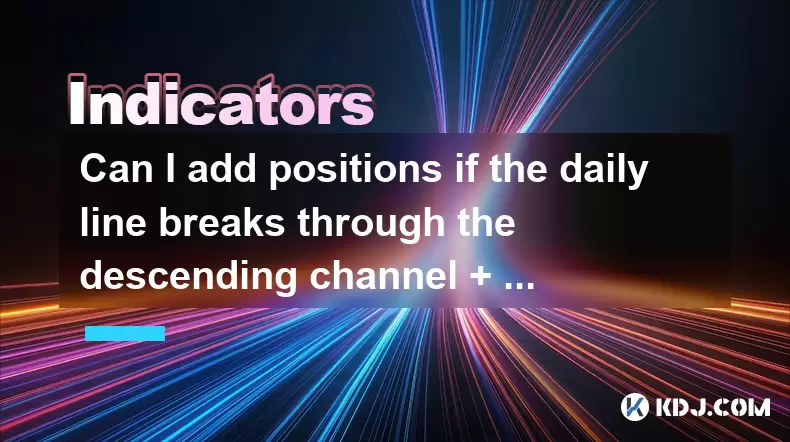
Can I add positions if the daily line breaks through the descending channel + the 30-minute moving average is in a bullish arrangement?
Jun 30,2025 at 11:00pm
Understanding the Descending Channel BreakoutWhen a daily line breaks through a descending channel, it indicates a potential shift in market sentiment from bearish to bullish. A descending channel is formed by drawing two parallel trendlines, where the upper trendline connects the lower highs and the lower trendline connects the lower lows. A breakout o...
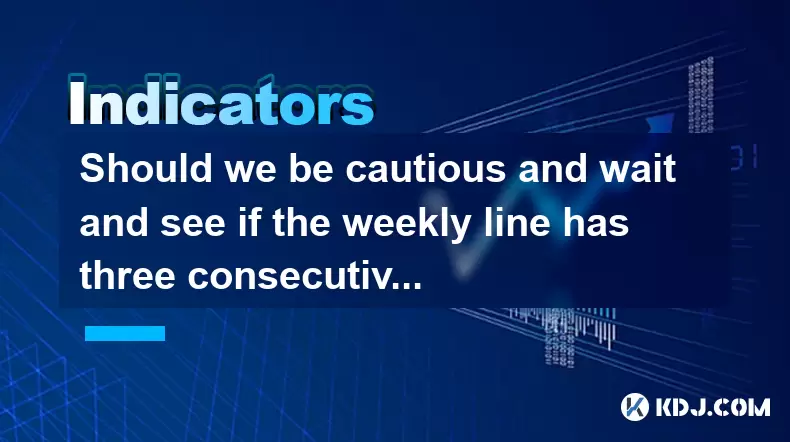
Should we be cautious and wait and see if the weekly line has three consecutive Yin lines + the daily MACD green column enlarges?
Jul 01,2025 at 12:42am
Understanding the Weekly Three Consecutive Yin Lines PatternIn technical analysis, three consecutive Yin lines on a weekly chart indicate a strong bearish trend. Each Yin line represents a week where the closing price is lower than the opening price, signaling consistent selling pressure. When this pattern appears three times in succession, it often sug...
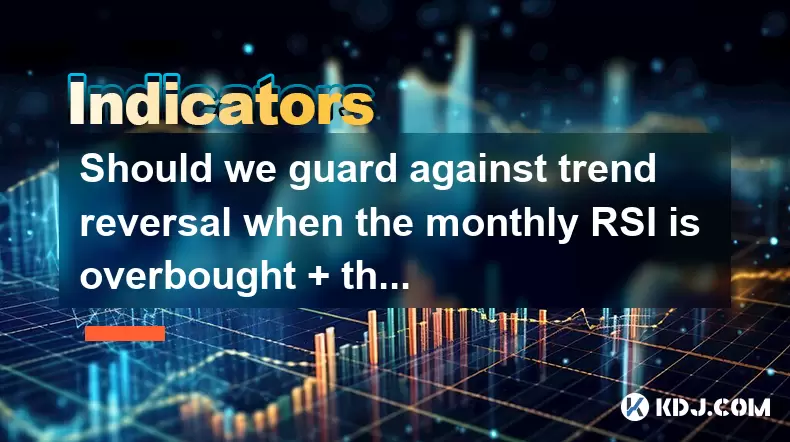
Should we guard against trend reversal when the monthly RSI is overbought + the weekly line has a long upper shadow?
Jun 30,2025 at 11:35pm
Understanding RSI Overbought Conditions in CryptocurrencyThe Relative Strength Index (RSI) is a momentum oscillator commonly used in technical analysis to identify overbought or oversold conditions in an asset. When the monthly RSI of a cryptocurrency reaches above 70, it is generally considered overbought, suggesting that the asset may be due for a pul...
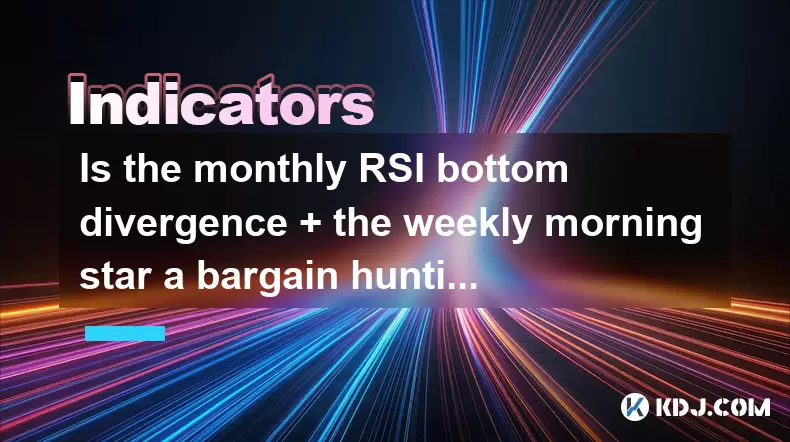
Is the monthly RSI bottom divergence + the weekly morning star a bargain hunting opportunity?
Jun 30,2025 at 09:57pm
Understanding RSI Bottom Divergence in Monthly TimeframesThe Relative Strength Index (RSI) is a momentum oscillator commonly used to identify overbought or oversold conditions in the market. When traders refer to a monthly RSI bottom divergence, they're observing a situation where the price makes a lower low, but the RSI makes a higher low on the monthl...
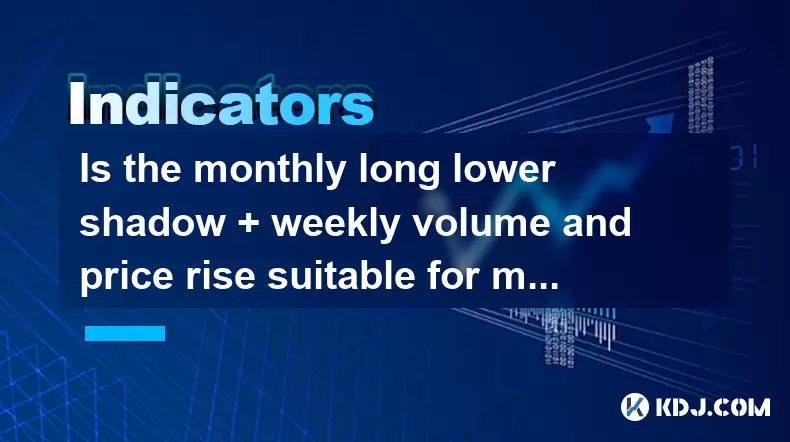
Is the monthly long lower shadow + weekly volume and price rise suitable for mid-term layout?
Jul 01,2025 at 01:29am
Understanding the Monthly Long Lower Shadow PatternA monthly long lower shadow candlestick pattern occurs when the price of a cryptocurrency drops significantly during the month but then rebounds to close near or above the opening price. This creates a candle with a long wick below and a relatively small body. In technical analysis, this pattern is ofte...
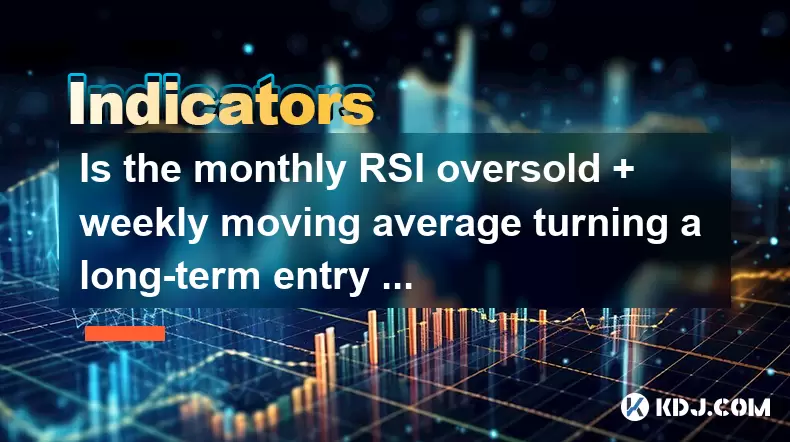
Is the monthly RSI oversold + weekly moving average turning a long-term entry signal?
Jun 30,2025 at 11:42pm
Understanding RSI and Its Role in Cryptocurrency TradingThe Relative Strength Index (RSI) is a momentum oscillator commonly used by traders to identify overbought or oversold conditions in the market. In the context of cryptocurrency, where volatility reigns supreme, understanding how RSI behaves on different timeframes becomes crucial. When the monthly...

Can I add positions if the daily line breaks through the descending channel + the 30-minute moving average is in a bullish arrangement?
Jun 30,2025 at 11:00pm
Understanding the Descending Channel BreakoutWhen a daily line breaks through a descending channel, it indicates a potential shift in market sentiment from bearish to bullish. A descending channel is formed by drawing two parallel trendlines, where the upper trendline connects the lower highs and the lower trendline connects the lower lows. A breakout o...

Should we be cautious and wait and see if the weekly line has three consecutive Yin lines + the daily MACD green column enlarges?
Jul 01,2025 at 12:42am
Understanding the Weekly Three Consecutive Yin Lines PatternIn technical analysis, three consecutive Yin lines on a weekly chart indicate a strong bearish trend. Each Yin line represents a week where the closing price is lower than the opening price, signaling consistent selling pressure. When this pattern appears three times in succession, it often sug...

Should we guard against trend reversal when the monthly RSI is overbought + the weekly line has a long upper shadow?
Jun 30,2025 at 11:35pm
Understanding RSI Overbought Conditions in CryptocurrencyThe Relative Strength Index (RSI) is a momentum oscillator commonly used in technical analysis to identify overbought or oversold conditions in an asset. When the monthly RSI of a cryptocurrency reaches above 70, it is generally considered overbought, suggesting that the asset may be due for a pul...

Is the monthly RSI bottom divergence + the weekly morning star a bargain hunting opportunity?
Jun 30,2025 at 09:57pm
Understanding RSI Bottom Divergence in Monthly TimeframesThe Relative Strength Index (RSI) is a momentum oscillator commonly used to identify overbought or oversold conditions in the market. When traders refer to a monthly RSI bottom divergence, they're observing a situation where the price makes a lower low, but the RSI makes a higher low on the monthl...

Is the monthly long lower shadow + weekly volume and price rise suitable for mid-term layout?
Jul 01,2025 at 01:29am
Understanding the Monthly Long Lower Shadow PatternA monthly long lower shadow candlestick pattern occurs when the price of a cryptocurrency drops significantly during the month but then rebounds to close near or above the opening price. This creates a candle with a long wick below and a relatively small body. In technical analysis, this pattern is ofte...

Is the monthly RSI oversold + weekly moving average turning a long-term entry signal?
Jun 30,2025 at 11:42pm
Understanding RSI and Its Role in Cryptocurrency TradingThe Relative Strength Index (RSI) is a momentum oscillator commonly used by traders to identify overbought or oversold conditions in the market. In the context of cryptocurrency, where volatility reigns supreme, understanding how RSI behaves on different timeframes becomes crucial. When the monthly...
See all articles

























































































